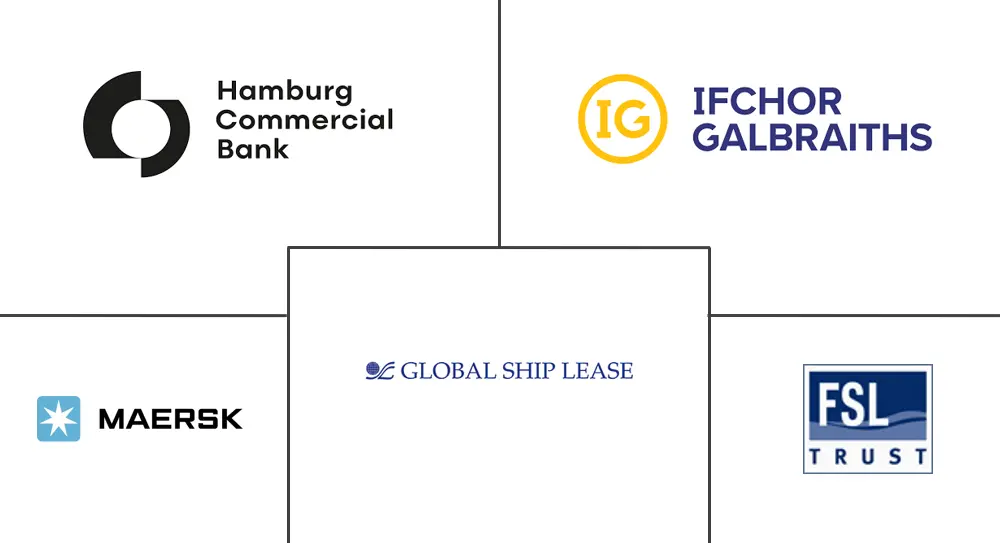Ship Leasing Market Size and Share
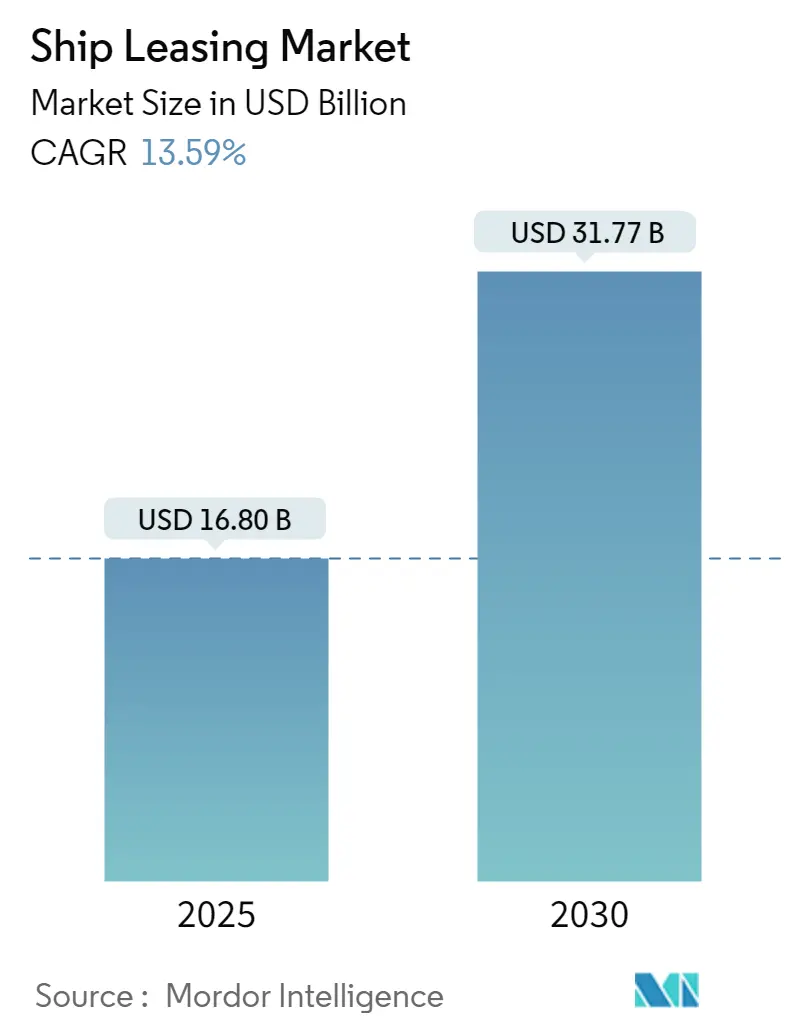
Ship Leasing Market Analysis by Mordor Intelligence
The Ship Leasing Market size is estimated at USD 16.80 billion in 2025, and is expected to reach USD 31.77 billion by 2030, at a CAGR of 13.59% during the forecast period (2025-2030).
- The COVID-19 pandemic deleteriously affected the ship leasing market. The onset of the pandemic prevented cargo as well as passenger ships from docking at the port of the local authorities, and this led to various merchant sailors being stranded on the ships. Moreover, various ship owners were required to pay additional costs since their ships were stranded on territorial water for an extended period.
- Furthermore, the pandemic also led to a decline in the import and export of products and goods, and this led to an impact on the global shipping industry. The decline in the COVID-19 pandemic led to improvement in terms of the import and export of goods by various countries and bolstered the growth of the shipping industry.
- The rise in demand for cargo transportation through shipping, the surge in international trade, and the increase in the transportation of heavy cargo are the main factors that will drive the growth of the market in the coming years. On the other hand, the complex regulatory framework governing ship leasing activities is expected to be a hindrance to market growth.
Global Ship Leasing Market Trends and Insights
Bareboat Charter Segment is Expected to Witness Significant Growth During the Forecast Period
- The bareboat charter segment is expected to grow significantly during the forecast period. The bareboat charter is an alternative ship lease contract to the time charter. Under the bareboat charter lease type, the lessee is fully responsible for the vessel's operation. Under the bareboat charter, the lessor does not carry the operational cost and vessel performance risk, resulting in a more predictable and stable cash flow.
- However, in the case of a customer default, the lessor must first secure repossession of the vessel. The bareboat charter has proven to be the lease contract of choice for the tanker industry. Tanker operators need control over the vessel because this is the service that they sell to their customers, which constitute the oil companies and traders.
- Moreover, bareboat charter agreements can be a great financial alternative, especially for people or companies with problems related to capital. However, on the other ha, the liabilities associated with these arrangements can be pretty risky. In other words, having a written bareboat charter in place can easily prevent miscommunication and lead to smooth operations. In the present scenario, countries such as Italy and Norway, amongst others, have adopted the bareboat charter form of rentals. Thus, the various advantages offered by bareboat charters will lead to multiple shipping companies adopting such a form of lease, leading to market growth during the forecast period.
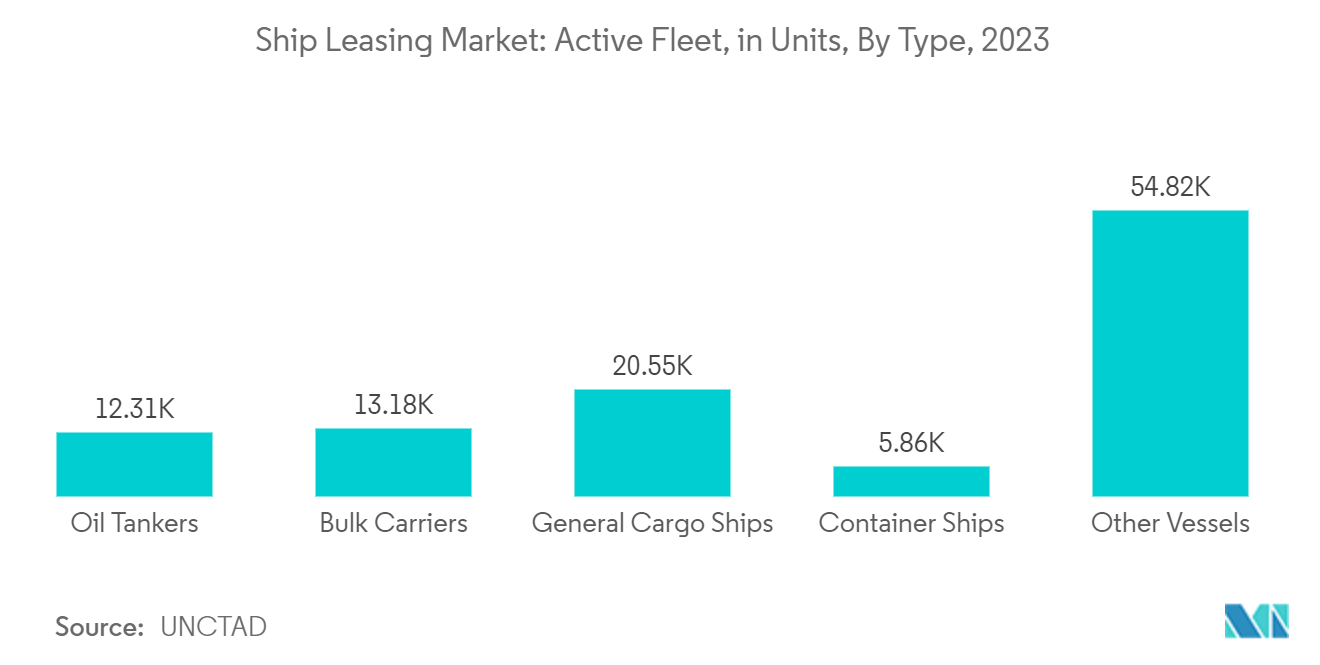
Asia-Pacific Region Is Expected to Witness Significant Growth During The Forecast Period
- The Asia-Pacific region is expected to witness significant growth during the forecast period. According to the United Nations Conference on Trade and Development reports, the Asia-Pacific regio remained the world's leading maritime cargo handling center in 2021, accounting for 42% of exports and 64% of imports. In 2021, around 40% of total containerized trade was on the main East-West routes between Asia, Europe, and the United States.
- As of January 2022, the top three ship-owning countries, regarding both dead-weight tonnage and commercial value, included two Asian countries, namely China and Japan. Moreover, China recorded the second-highest tonnage increase (13%) among the top 25 ship-owning countries. As of the present scenario, maritime ship supply continues to be dominated by three countries, namely, China, the Republic of Korea, and Japan, which in 2022 together had 94% of the market. In addition, in the past few years, countries such as China and Korea have witnessed an increase in terms of shipbuilding activities by 15.5% and 8.3%, respectively. Additionally, in Vietnam, the Ministry of Industry and Trade proposed several measures to ease issues related to the supply chain along intra-Asian routes, thereby reducing the burden on traders. Measures proposed by the Ministry also included tax incentives to attract foreign investment in new ships, encourage private-sector investment in key infrastructure upgrades, and promote fleet renewal and the development of a coastal fleet management program. Thus, with such developments, there will be an increase in new ship leases to carry out new ship operations, leading to a growth in the market during the forecast period.
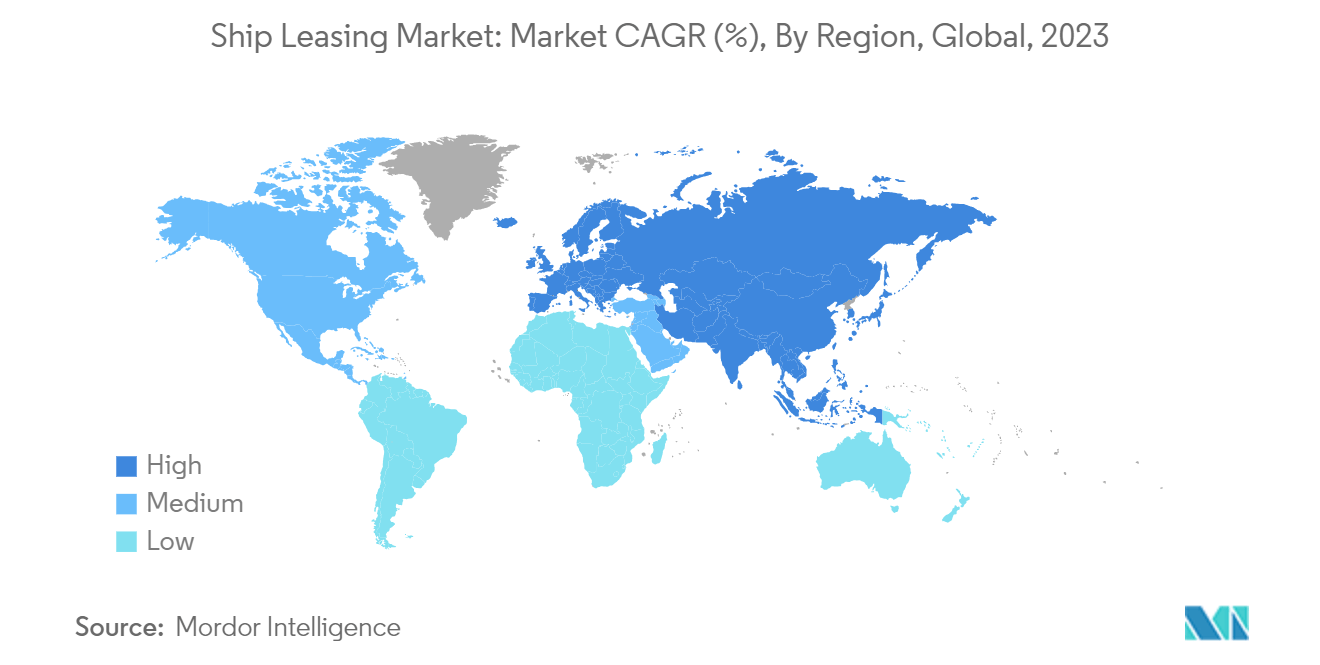
Competitive Landscape
The ship leasing market is semi-consolidated in nature, with the presence of a few players holding significant shares in the market. Some of the prominent players in the airport baggage handling systems market are A.P. Møller - Mærsk A/S, Global Ship Lease, Inc., Hamburg Commercial Bank AG, First Ship Lease Trust, and Galbraiths Ltd., amongst others.
These companies have expanded their presence in various regions to provide flexible financing options, which will lead the shipping industry to carry out its operations effectively and efficiently. As the market demand improves with the growth in terms of shipping operations worldwide, it is expected that the smaller players will be acquired to gain a competitive advantage to cater to customers' needs.
Ship Leasing Industry Leaders
A.P. Møller - Mærsk A/S
Global Ship Lease, Inc.
Hamburg Commercial Bank AG
First Ship Lease Trust
Galbraiths Ltd.
- *Disclaimer: Major Players sorted in no particular order
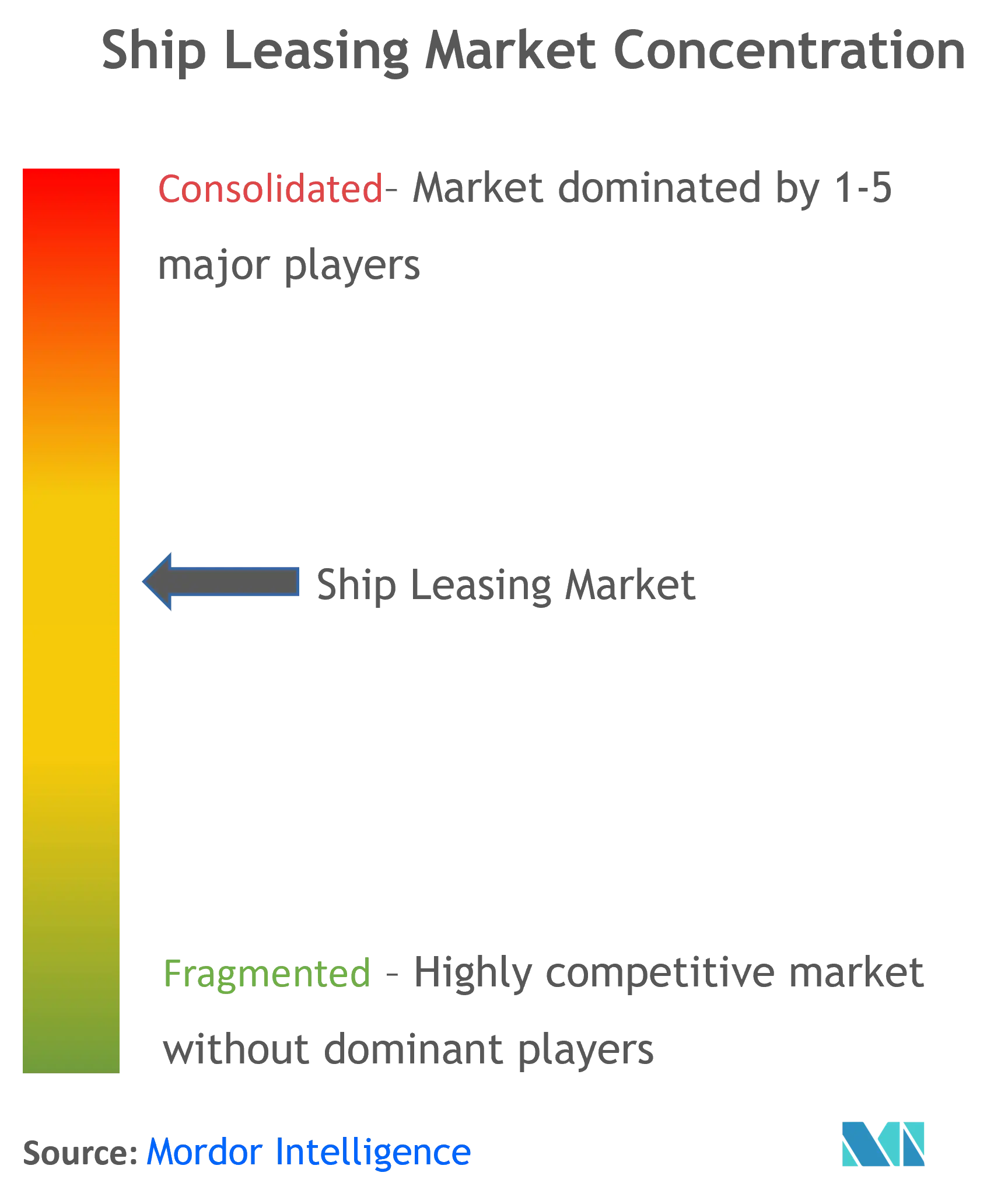
Recent Industry Developments
October 2023: Global Ship Lease (GSL) signed a contract with Ascenz Marorka to roll out its Smart Shipping system across the GSL fleet. As per the contract terms, automatic data collection systems and software designed to enable real-time management and optimization of vessel energy consumption and environmental performance (such as Ascenz Marorka’s weather routing service) would be installed onboard the ships operated by GSL.
December 2022: Russia announced offering India the proposition to lease and build large-capacity ships as insurance on Russian oil amid the G7 price cap on Russian energy purchases. Russia extended the offer so that India would not have to rely on European insurance services and tanker charters.
December 2022: The biggest gas utility company in India, GAIL, signed a contract with a wholly owned unit of Japan's Mitsui O. S. K. Lines Ltd. to time charter a new liquefied natural gas. The new LNG carrier, which is being constructed at South Korea's Daewoo Shipbuilding & Marine Engineering Co Ltd, will be the second LNG carrier serving GAIL and is set to begin the time charter in 2023
Global Ship Leasing Market Report Scope
Ship leasing refers to a contract between a lessor and a lessee for the hire of a ship for a specific period on payment of specified rentals. In the shipping industry, a lessor (legal owner/leasing company) gives a lessee (operator/shipping company) in consideration of regular lease/hire payments, full possession, and operational control of the ship for an agreed period.
The ship leasing market is segmented by lease type, application, type, and geography. By lease type, the market has been segmented into a financial lease and a full-service lease. By application, the market has been segmented into container ships and bulk carriers. By type, the market has been segmented into a real-time lease, periodic tenancy, bareboat charter, and others. The report also covers the market sizes and forecasts for the ship leasing market in major countries across different regions. For each segment, the market size is provided in terms of value (USD).
| Financial Lease |
| Full-Service Lease |
| Container Ships |
| Bulk Carriers |
| Real-Time Lease |
| Periodic Tenancy |
| Bareboat Charter |
| Other Types |
| North America | United States |
| Canada | |
| Europe | United Kingdom |
| France | |
| Germany | |
| Rest of Europe | |
| Asia-Pacific | China |
| India | |
| Japan | |
| South Korea | |
| Rest of Asia-Pacific | |
| Latin America | Brazil |
| Rest of Latin America | |
| Middle East and Africa | United Arab Emirates |
| Saudi Arabia | |
| South Africa | |
| Rest of Middle East and Africa |
| Lease Type | Financial Lease | |
| Full-Service Lease | ||
| Application | Container Ships | |
| Bulk Carriers | ||
| Type | Real-Time Lease | |
| Periodic Tenancy | ||
| Bareboat Charter | ||
| Other Types | ||
| Geography | North America | United States |
| Canada | ||
| Europe | United Kingdom | |
| France | ||
| Germany | ||
| Rest of Europe | ||
| Asia-Pacific | China | |
| India | ||
| Japan | ||
| South Korea | ||
| Rest of Asia-Pacific | ||
| Latin America | Brazil | |
| Rest of Latin America | ||
| Middle East and Africa | United Arab Emirates | |
| Saudi Arabia | ||
| South Africa | ||
| Rest of Middle East and Africa | ||
Key Questions Answered in the Report
How big is the Ship Leasing Market?
The Ship Leasing Market size is expected to reach USD 16.80 billion in 2025 and grow at a CAGR of 13.59% to reach USD 31.77 billion by 2030.
What is the current Ship Leasing Market size?
In 2025, the Ship Leasing Market size is expected to reach USD 16.80 billion.
Who are the key players in Ship Leasing Market?
A.P. Møller - Mærsk A/S, Global Ship Lease, Inc., Hamburg Commercial Bank AG, First Ship Lease Trust and Galbraiths Ltd. are the major companies operating in the Ship Leasing Market.
Which is the fastest growing region in Ship Leasing Market?
Asia Pacific is estimated to grow at the highest CAGR over the forecast period (2025-2030).
Which region has the biggest share in Ship Leasing Market?
In 2025, the North America accounts for the largest market share in Ship Leasing Market.
What years does this Ship Leasing Market cover, and what was the market size in 2024?
In 2024, the Ship Leasing Market size was estimated at USD 14.52 billion. The report covers the Ship Leasing Market historical market size for years: 2019, 2020, 2021, 2022, 2023 and 2024. The report also forecasts the Ship Leasing Market size for years: 2025, 2026, 2027, 2028, 2029 and 2030.
Page last updated on:
Ship Leasing Market Report
Statistics for the 2025 Ship Leasing market share, size and revenue growth rate, created by Mordor Intelligence™ Industry Reports. Ship Leasing analysis includes a market forecast outlook for 2025 to 2030 and historical overview. Get a sample of this industry analysis as a free report PDF download.
